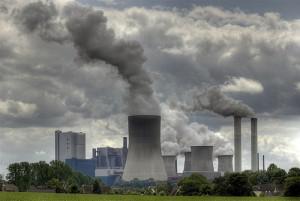 Last week the Environmental Protection Agency (EPA) announced that it added protections to the Clean Air Act aimed at reducing smokestack emissions that are responsible for causing air pollution in neighboring cities and states. The protections are aimed to replace the EPA’s 2005 Clean Air Interstate Rule (CAIR). According to the EPA, “a December 2008 court decision kept the requirements of CAIR in place temporarily but directed EPA to issue a new rule to implement Clean Air Act requirements concerning the transport of air pollution across state boundaries.”
Last week the Environmental Protection Agency (EPA) announced that it added protections to the Clean Air Act aimed at reducing smokestack emissions that are responsible for causing air pollution in neighboring cities and states. The protections are aimed to replace the EPA’s 2005 Clean Air Interstate Rule (CAIR). According to the EPA, “a December 2008 court decision kept the requirements of CAIR in place temporarily but directed EPA to issue a new rule to implement Clean Air Act requirements concerning the transport of air pollution across state boundaries.”
The regulations were updated in order to protect those living downwind of coal fired power plants. “The Cross-State Air Pollution Rule will protect communities that are home to 240 million Americans from smog and soot pollution, preventing up to 34,000 premature deaths, 15,000 nonfatal heart attacks, 19,000 cases of acute bronchitis, 400,000 cases of aggravated asthma, and 1.8 million sick days a year beginning in 2014 – achieving up to $280 billion in annual health benefits. Twenty seven states in the eastern half of the country will work with power plants to cut air pollution under the rule, which leverages widely available, proven and cost-effective control technologies.”
Improved air quality will result from cuts in SO2 and NOx emissions. These molecules play a role in pollution issues in states other than those where the emission originate, hence the need for a Cross-State Air Pollution Rule. “Carried long distances across the country by wind and weather, power plant emissions of sulfur dioxide (SO2) and nitrogen oxide (NOx) continually travel across state lines. As the pollution is transported, it reacts in the atmosphere and contributes to harmful levels of smog (ground-level ozone) and soot (fine particles), which are scientifically linked to widespread illnesses and premature deaths and prevent many cities and communities from enjoying healthy air quality.”
Within three years this change, along with other EPA and local provisions, will lead to a 73 percent decrease in SO2 emissions as compared to 2005 levels while NOx emissions will drop by 54 percent. As part of the proposal, some states (Iowa, Kansas, Michigan, Missouri, Oklahoma, and Wisconsin) will be required to reduce nitrogen oxide emissions throughout the summer ozone season.
NPR reports the opposition consists of utilities arguing that tax revenue and jobs will decline as power plants are taken offline in order to comply with the new standards. However, Harvard Economist Robert Stavins who says that “the new regulation is a real winner for the economy.” He points to the benefits in relation to personal health and decreased healthcare costs will outweigh potential increases in electricity costs.
[Image source]

